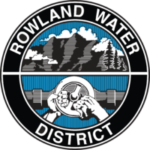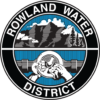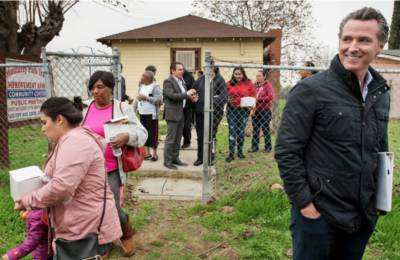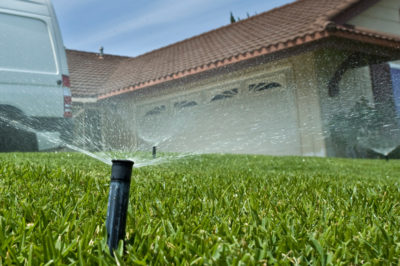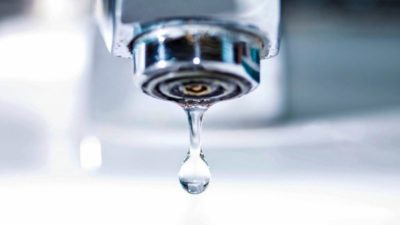California Waterblog
- Roaches of California: Hidden Biodiversity in a Native Minnowby Christine Parisek on April 28, 2024 at 11:05 am
by Peter B. Moyle *This is a repost of a blog originally published in 2019. If you inspect small streams in northern California, including those that seem too small or warm for any fish, you will often see minnows swimming … Continue reading →
- Support our Students and Engagement at the Center for Watershed Sciencesby UC Davis Center for Watershed Sciences on April 19, 2024 at 3:16 pm
California WaterBlog is a long-running outreach project from the UC Davis Center for Watershed Sciences, a research center dedicated to interdisciplinary study of water challenges, particularly in California. We focus on environmentally and economically sustainable solutions for managing rivers, lakes, … Continue reading →
- Mornings at the Duck Pondby Andrew Rypel on April 14, 2024 at 12:00 pm
By Andrew L. Rypel Each morning is similar, but different. As we approach the pond on the wooden catwalk, you can hear the birds calling, eventually you start to smell the freshness of the ecosystem, the glitters and splashing ahead … Continue reading →
- Spinning Salmon in the Classroomby jaylund on April 7, 2024 at 11:15 am
by Abigail Ward and Peggy Harte Salmon face many stressors that significantly reduce their survival. Persistent challenges include habitat degradation, predation, pollution, and climate change that threaten already at-risk populations. Conservation efforts in California engage with the complexity of these … Continue reading →
- Manifesting Successful Aquatic Restorationby UC Davis Center for Watershed Sciences on April 1, 2024 at 12:00 pm
by E.J. Baybe-Mahn Successful aquatic restoration traditionally comes from extensive research and knowledge of the system, collaboration among stakeholders, and thorough planning. But what if there was another way to ensure restorations are creating the results we want to see? … Continue reading →
- California’s March Water Madnessby jaylund on March 24, 2024 at 11:51 am
by Jay Lund March is usually the last month in California’s mostly unpredictable wet season. A dry March can make a promising water year disappointing. A very wet March can make a potentially critically dry year be only mildly dry, … Continue reading →
- Love Alpaugh: Celebrating the life and legacy of Sandra Merazby Christine Parisek on March 17, 2024 at 11:00 am
By Kristin Dobbin “Some people say Alpaugh is the stepchild of Tulare County; I say we’re the forgotten ones. Rural families are an endangered species.” – Sandra Meraz, Dec 2014 in the LA Times When Alexandrina “Sandra” Meraz arrived in … Continue reading →
- A Functional Flows approach for Environmental Flows in Chileby jaylund on March 10, 2024 at 10:51 am
by Sarah Yarnell, Diego Rivera Salazar, Camila Boettiger, and Jay Lund Countries, regions, and river basins globally are struggling to provide and manage flows in rivers for ecosystems. One approach, of many, is a Functional Flows approach, because it seeks … Continue reading →
- Some curious things about water managementby Christine Parisek on March 3, 2024 at 12:05 pm
By Jay R. Lund *This is a repost of a blog originally published in 2012. Water management is often very different from what we think intuitively, or what we have been taught. Here are some examples. 1. Most water decisions … Continue reading →
- Minimum Flow Laws in California and Chileby Christine Parisek on February 25, 2024 at 12:00 pm
By Camila Boettiger, Karrigan Börk, Roberto Ponce Oliva, Diego Rivera, Jay Lund, and Sarah Yarnell California and Chile share a history of water allocation with little regard for instream uses of water, especially environmental uses. In California, for example, many … Continue reading →
Media Updates
Don’t be fooled by an unfair and unnecessary water tax
Don’t be fooled by an unfair and unnecessary water [...]
Gavin Newsom budget calls for drinking water tax to help poor communities
The Sacramento Bee: Gavin Newsom budget calls for drinking [...]
Drought or no drought: Jerry Brown sets permanent water conservation rules for Californians
The Mercury News: Drought or no drought: Jerry Brown sets [...]
Get ready to save water: Permanent California restrictions approved by Gov. Jerry Brown
The Sacramento Bee: Get ready to save water: Permanent California [...]
Water tax proposal poor policy
LA Times: Water tax proposal poor policy By Mark [...]
Aquafornia News
- Agencies race to fix plans to sustain groundwater levelsby Nick Cahill on May 1, 2024 at 3:09 pm
Seeking to prevent the California State Water Resources Control Board from stepping in to regulate groundwater in critically overdrafted subbasins, local agencies are working to correct deficiencies in their plans to protect groundwater. With groundwater sustainability agencies formed and groundwater sustainability plans evaluated, the state water board has moved to implement the 2014 Sustainable Groundwater Management Act, or SGMA. … Under probation, groundwater extractors in the Tulare Lake subbasin face annual fees of $300 per well and $20 per acre-foot pumped, plus a late reporting fee of 25%. SGMA also requires well owners to file annual groundwater extraction reports. View Original Article read more
- San Rafael pump station project delayedby Alastair Bland on May 1, 2024 at 2:49 pm
A rebuild of a key pump station that prevents flooding around Interstate 580 in San Rafael has hit a roadblock. Crucial electrical components needed to operate the new San Quentin pump station are unavailable at least until October because of supply chain shortages. View Original Article read more
- As Great Salt Lake nears key level, Utah finds inspiration elsewhere to help lake’s recoveryby Alastair Bland on May 1, 2024 at 2:14 pm
The Great Salt Lake’s southern arm reached 4,195 feet elevation at times over the stormy weekend as it nears reaching that figure daily for the first time in five years. While that’s a key water level in the ongoing efforts to preserve the lake after it reached an all-time low in 2022, the state agency tasked with overseeing the lake’s future recently took a field trip to other parts of the Southwest as it soaks up ideas that could help improve future water inflows. View Original Article read more
- Problems with Glen Canyon Dam could jeopardize water flowing to Western statesby Alastair Bland on May 1, 2024 at 1:52 pm
A new memo from the U.S. Bureau of Reclamation is raising concern about the infrastructure at the Glen Canyon Dam and its ability to deliver water downstream should levels at Lake Powell continue to decline. Environmental groups are calling it “the most urgent water problem” for the Colorado River and the 40 million people who rely on it. … Without upgrades to the dam’s infrastructure, the bureau’s ability to get water downstream to the lower Colorado River basin as required by the Colorado River Compact could be in jeopardy. Even after record-breaking snowfall in 2023 and an above average 2024 winter, Lake Powell remains at about 32% full, according to data from the bureau. And scientists estimate flows in the river have decreased by roughly 20% over the last century, with warming temperatures resulting in a 10% decrease in runoff. Related article: Nevada Current: Nevada joins six western states demanding more water investments View Original Article read more
- Sweeping Colorado River settlement will bring water, equity to Navajo communitiesby Alastair Bland on May 1, 2024 at 1:46 pm
Two months after Navajo Nation officials released details of a sweeping agreement to secure rights on the Colorado and Little Colorado rivers, there have been numerous community meetings to discuss what it means for people to secure water access. What’s clear is that the settlement, known as the Northeastern Arizona Indian Water Rights Settlement Agreement, is about equity, human rights and securing access to water for the next 100 years for the Navajo people. … The agreement would settle all of the Navajo Nation’s water rights claims in Arizona, which includes the Colorado River Upper Basin, the Colorado River Lower Basin, Little Colorado River Basin and some groundwater. The proposal will be put into legislation and voted on by the Navajo Nation Council before it is sent to Congress, where lawmakers could make their own adjustments. Related tribal water articles: KAWC – Yuma: Colorado River Indian Tribes sign historic water rights agreement in Parker KJZZ – Tempe: Colorado River deal means more say for Indigenous people in water decisions View Original Article read more
- News release: Council appoints Delta lead scientistby Alastair Bland on May 1, 2024 at 1:41 pm
On April 25, 2024, the Delta Stewardship Council unanimously appointed Dr. Lisamarie Windham-Myers as its new lead scientist for the Delta Science Program. She had been serving in an interim capacity during the lead scientist recruitment process due to the early departure of the prior lead scientist. At the recommendation of the Delta Independent Science Board, the Council extended Dr. Windham-Myers’ term to a full three-year term through November 30, 2026. … Dr. Windham-Myers is a systems ecologist with the U.S. Geological Survey who is known internationally for her work leading teams to advance the understanding of carbon sequestration in aquatic systems. View Original Article read more
- 2 Central Coast cities receive funds for water infrastructureby Alastair Bland on May 1, 2024 at 1:38 pm
In Salinas, U.S. Congresswoman Zoe Lofgren presented checks appropriated by Congress for two community projects totaling nearly $2 million. This federal funding is for water infrastructure in Salinas and Watsonville. More specifically going toward local wastewater treatment projects. … In Salinas, the money will be used to expand the industrial waste treatment facility with plans to lower the operational costs. Watsonville’s treatment facility also needs major upgrades. Public works for the city says the cost for the repairs can go anywhere from $30 to $40 million. Related water treatment articles: Santa Margarita Water District - News release: Orange County’s largest recycled water reservoir nears capacity The San Diego Union-Tribune: Opinion - San Diego has sticker shock at cost of water purification View Original Article read more
- Opinion – Statewide water supply target supports California’s manufacturersby Alastair Bland on May 1, 2024 at 1:33 pm
Water use in California is typically thought of in three parts: water for the environment (50%), water for agriculture (40%), and water for communities (10%) per the Public Policy Institute of California (PPIC). As a result, “ag” is the sector of the economy that comes to mind first when we talk about the state’s water supply. But the rest of California’s economy also requires water. California’s manufacturers – one of the state’s largest industry sectors, accounting for 11.8% of state GDP – need water. -Written by Lance Hastings, President and CEO of the California Manufacturers & Technology Association. View Original Article read more
